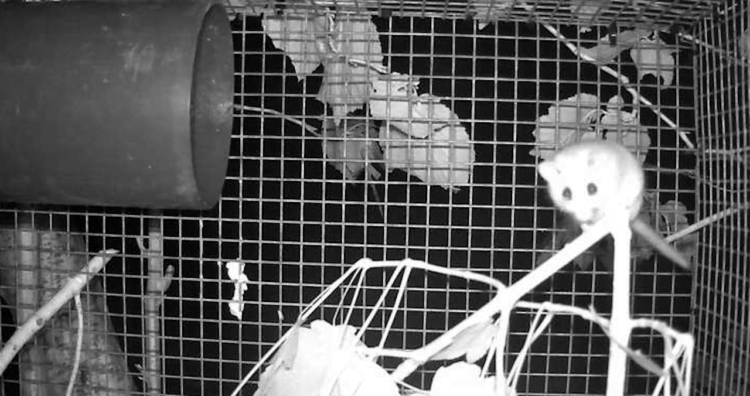The Southern region of Network Rail's is working in partnership with the Zoological Society of London (ZSL) to find out what species of wildlife are living along railway lines and to explore better ways to understand and monitor them.
One of the first species to be studied, and the partners have been working together with Google to develop ways in which these rare species can be monitored on often difficult to access lineside land.

In partnership with the wildlife charity People's Trust for Endangered Species (PTES), equipment has been deployed in woodland near the National Trust property at Calke Abbey in Derbyshire where PTES carried out an annual dormouse reintroduction last June. The monitoring provided many images, videos, and acoustic recordings that will be used to develop new AI and machine learning algorithms so that the presence of dormice can be detected remotely.
By storing and analysing the data on Google Cloud, Network Rail will be able to make significant savings in time and money compared with manually checking the dormouse nest boxes for their presence.
It is known that Hazel dormice live alongside certain stretches of line, mainly in the south of England and along the Welsh border. Camera traps and audio sensors have been deployed at various sites in London and the South East, especially at Cowden in Kent where dormice are known to rest.
Dormice are a protected species that are listed as vulnerable to extinction on the IUCN Red List for Britain's Mammals, with an estimated population decline of 70% since 2000.
Further information on how Network Rail is improving biodiversity on its land can be found at https://www.networkrail.co.uk/sustainability/biodiversity-on-britains-railway, and further information about hazel dormice is online at www.ptes.org/dormice.
Network Rail ecologist Aline Gomes said: “Understanding the plant and animal life around our railway plays a big part in helping us manage our railway sustainably. Our regional ecology team wanted to find innovative ways of monitoring the wildlife on our lineside while maintaining a safe distance, and working with ZSL has allowed us to achieve that. The knowledge we are gaining is already improving the way we manage our land to benefit the different species that live along our railway, including dormice.
“The railway can provide a great habitat for dormice and by gaining a deeper understanding of the species, we can help them by improving how and when we manage the lineside habitat to contribute towards the conservation of the species.”
ZSL's Project Manager Rachael Kemp said: “Unlocking the power of cutting-edge technology, our remote, automated methods provide an exciting, cost-efficient opportunity to study dormice living near railways. We are using images, videos and audio files of dormice collected at Calke Abbey and Cowden to train machine learning algorithms to help Network Rail understand which nest boxes along the tracks are being used by this beloved mammal and easily monitor them over time. This will help Network Rail understand how lineside maintenance and conservation strategies are affecting local populations”.
Network Rail's biodiversity strategy manager, Dr Neil Strong, said: “Managing our railway lineside is important not just because we have to keep trains safe but also because those linesides provide wildlife corridors for species such as dormice, which would struggle to move between habitats otherwise.
“We have to manage them though – it's not about letting them grow wild. Trees can fall in front of trains and grow in front of signals, so we work to cut back those where we have to, and make the right habitat, ideally away from the tracks, to give good cover for creatures who need it.”
Google Cloud's executive sponsor Omer Mahmood said: “As part of our ongoing commitment to help our customers use Google Cloud's AI and ML to drive important climate and conservation efforts, it has been our privilege to be a key technology partner with ZSL and Network Rail on this project.
“We look forward to new opportunities for collaboration, enabling Network Rail to meet their ambitions for a net gain in lineside biodiversity, by improving the efficiency of their data pipelines and monitoring at scale, across their rail network in the years to come”.